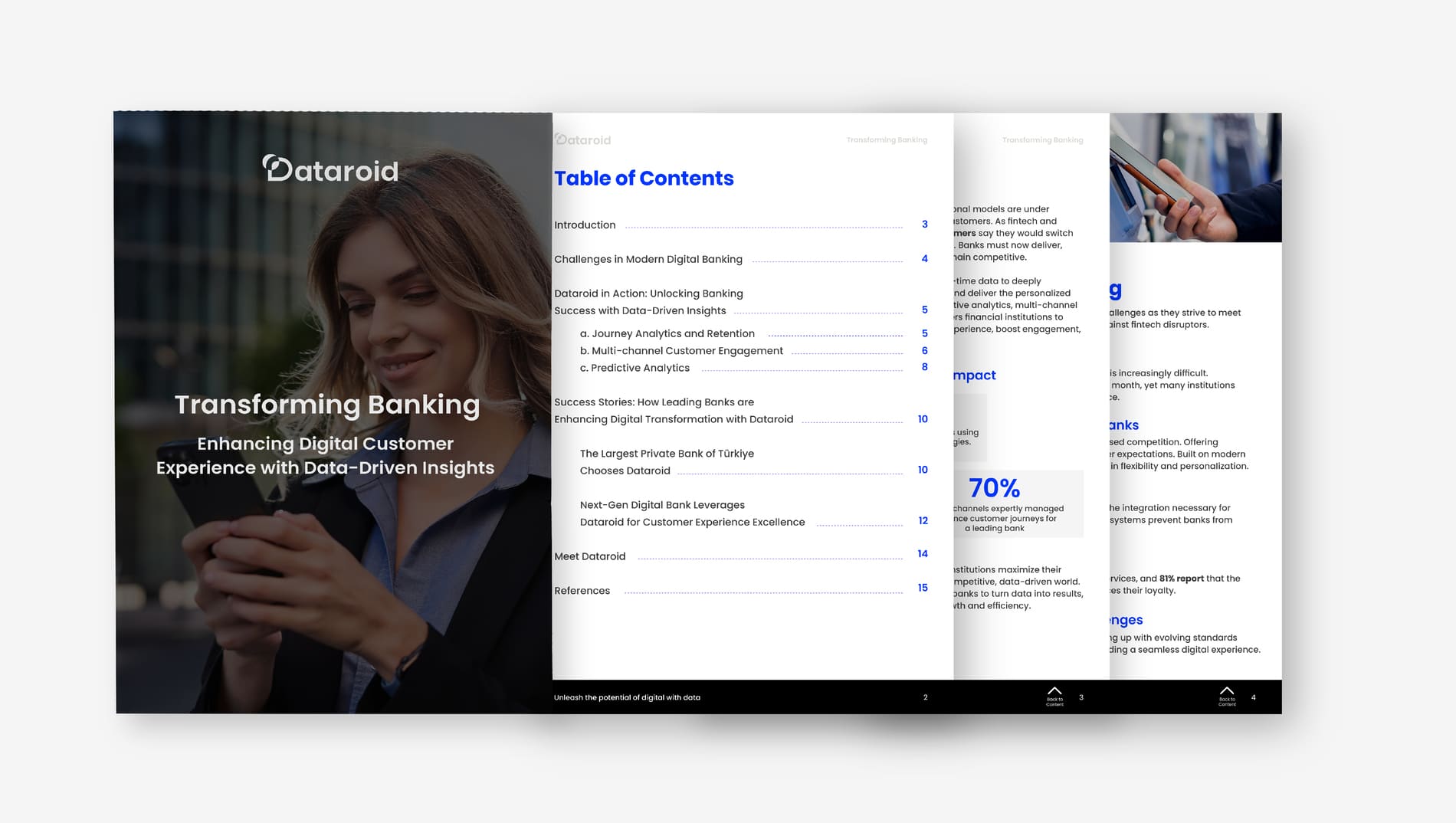How Analytics Can Create a Better Onboarding Experience for Your Customers
- Reading Time: 5 minutes

Business Development Specialist
What is user onboarding ?
Onboarding is actually the second step of the customer journey, following the initial installation of your app. But it’s probably the most critical. Onboarding is the process of introducing users to your app. It’s the first time they’ll log in, or play around with it, or figure out what your app really is and how useful it can be to their lives. Essentially it’s their first impression of your product.
For users to get to know you, first you must get to know them
Getting to know your users is critical to successful onboarding practice. Who are they, what are they looking for, what attracted them to your product in the first place? What are their needs, their interests, their identities? What would pique their interest, or turn them off entirely? In those crucial opening moments where they’re first interacting with your product, what will speak most to them on a personal level?
All these questions may seem somewhat simple, but it actually takes fairly complex analysis to determine the answer for each individual user. Some users may be most interested in a less popular feature of your app, and it’s still up to you to provide it for them right off the bat.
This means you need to segment your users so that each user is onboarded into the context that makes the most sense for their individual needs. Segmenting requires data on behavior patterns and any other set of data you have access to, from which point you can analyze how different users segment into different sets, and how the onboarding process should be modified for each segment. Essentially, analytical tools can tell you what each user is looking for, and how they expect to interact with your app, meaning it’s simply up to you to tailor that “first impression” to the exact impression you already know they’re looking for.
Sign up to drive your business with the power of data
The simplest way is always the best
But regardless of which segment your user fits into, you have to make sure those initial interactions with your product are simple, easy, and straightforward.
We should note here that part of the reason onboarding is so important is that it’s the most common reason for churn along any step of the customer journey. Oftentimes, even churn at a later date can be linked badly to something that went mildly wrong during the onboarding process. It is absolutely critical that this stage goes as seamlessly and as well planned – from your perspective = as possible.
And that’s why everything needs to be clear, concise, and easy to use right from the get-go. If log-ins are required, it should be easy to get through without any hiccups, and if you offer skipping log in pages, then that should be made incredibly clear so that users can use your product in the way that suits them best.
How to use product analytics to improve the onboarding process?
We’ve already talked about how important data is in segmenting your users so that you can tailor the onboarding process to each individual user. From there, analytics offers you data regarding how those users are most likely to continue using your product. Data can be collected in real time as users use your product and you can see where any weaknesses might occur and change them rapidly.
Analytics platforms like Dataroid are perfect for this kind of quick turnaround, where little molehills of a problem can be identified before they grow into mountains. Essentially, analytics lets you design a product to become truly successful with your users, showing you what users want, what they DON’T want, and how to ensure they only get the former.
How do you measure user onboarding to improve engagement?
When you collect data on every aspect of the customer journey, you’re looking for that data to answer a whole set of important questions for you.
- Where did users first discover your app?
- How did they download it?
- What was the first thing they saw when they opened the app?
- How did they register?
- What parts of the app did they respond to and engage with most?
- What were the problem points?
- What caused them to stop using the app?
And so on..
Collecting data to accurately answer all of these questions lets you focus on which customers are most likely to respond to, or engage with, different parts of your product. Then during the onboarding process you can highlight those specific elements for each segment of customer to boost engagement and improve the customer experience, which in turn obviously will increase customer retention.
Key Takeaways
Onboarding is the process by which users first interact on a deeper level with your product. As a result, it’s also arguably the most important part of the customer journey, the first impression your users have with your product. Analytics platforms like Dataroid are experienced in breaking down both users and the steps they take into data, and then analyzing that data to optimize your product. This means identifying what each user is looking for in your product, and how you can provide it to them to increase engagement and reduce churn.
Sign up to drive your business with the power of data

Business Development Specialist
YOU MAY ALSO LIKE
Drive your digital growth
Schedule a demo today to learn more on how we can help you unleash the potential of digital using Dataroid.





